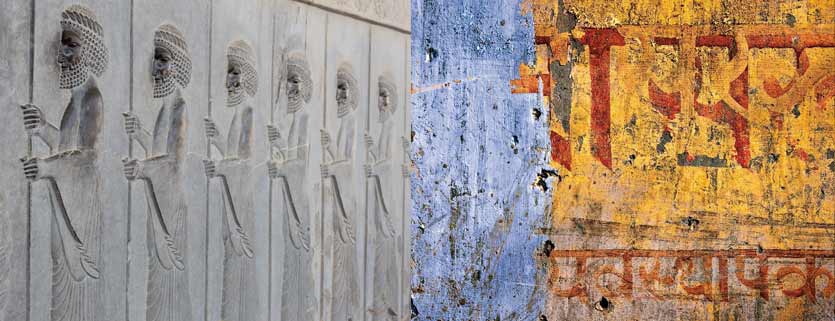Iran / India – an energy partnership?
Iran’s sanctions have been lifted a couple of months now and it just looks like, things are not going exactly as planned for the Iranians. My readers will remember that I predicted this outcome in mid-January this year.
The reasons are many but the ONE, the big and significant reason can be summarized as “Nobody wants to spend a lot of cash on a risk investment when oil prices are low and demand for more oil and gas is finite”. Besides, Iran is a big and proud nation – not exactly an easy pushover and certainly no fun at the negotiating table.
That being said, Iran still has a lot of oil and gas and even if the world is awash with the stuff right now, this blissful state of affairs will not last forever. Besides, we are also in the middle of an energy transformation at the end of which there will be much more gas and much less coal in the global energy portfolio. And this is not a developed world fad.
Now that the high energy price craze is over and the “lets ship LNG all over the globe” hype has evaporated, gas becomes a regional play again. This means that regional partnerships come back into fashion.
But not so quick. In previous posts, I have argued that Iran would be better of by using its gas in order to clean up their own environment and push their own economy into a new age. And I stand by that assertion as Iran has a massive population and an economy just as massive. There is a huge industrial sector hungry for cleaner energy and whoever has experienced a smoggy day in Tehran knows that some LNG/CNG as transport fuel would do it good.
However, Iran also holds some of the biggest gas reserves of the planet and due to under-exploration over the last decade or so, there sure is massively more in the ground – waiting to be discovered. This gives Iran a gas supply base that must be considered virtually never ending. Let’s not forget that the country sits atop massive shale gas reserves as well, which means that once the very large conventional reserves have run low in some decades time, they can still frac and continue the bonanza until hell freezes over.
Looking at Iran, there are some new and rather biggish markets in close vicinity which is encouraging but Iran is also not an easy country in an even uneasier neighborhood. I would argue that gas deliveries into the Arab world and also Pakistan would strengthen relationships between all those countries and Iran but I understand that there are decades of mistrust to bridge and that might be too hard to fathom in the short run.
But anyone looking slightly further afar will stumble upon the one country that does not have a historically fraught relationship with Iran – and that’s India. Much to the contrary, both countries look back at many centuries with the best of relationships. During the great Mughal empire, Persian elites were drawn onto the subcontinent spawning one of the most splendid periods in Indian history and culture. Those people share more than the same continent – and both are big, industrialized countries with vast, ingenious populations and very similar problems today – which makes them natural allies.
Both, India and Iran have huge sprawling cities with enormous environmental problems. Both of them are natural born leaders in their respective spheres of influence and both of them have huge populations with thousands of years of city dwelling culture. OK, there are not quite as many Iranians around as there are Indians but that does not make Iran a minnow. Anyone looks small compared to the country with the second largest population on earth.
India is the fourth-biggest energy consumer on this planet and Natural Gas accounts for just under 8% of that. The country is still a huge coal hog which makes living in the big cities a nightmare. Pollution levels are bad and it’s also for this reason that the Indian supreme court had ruled in the past that air pollution is an infringement of human rights – a world premiere at the time. Since 2015, India has also become the 3rd largest oil importer worldwide after the US and China. 4,1 million barrels per day enter the biggest country on the Subcontinent.
Most of the growing Iranian production since the end of sanctions goes to India already and it’s in large part India that prevents another steep drop in oil prices with all the OPEC production gushing on. Indian Oil minister Pradhan has indeed been in Tehran in April this year in order to enhance the new partnership.
However, it’s not only investments in oil and gas infrastructure that could be important to Iran. Just like India, Iran has a monstrous air quality problem on its hands. On some days in Tehran, one cannot even see the mountains because of the yellowish cloak over the city. Much of that comes from a bazillion diesel vehicles that roam the streets of the city. Traffic in Tehran is epic for anyone who has never been there. Being somewhere in time amounts to an art of highly versed drivers.
India has introduced a “Gas as vehicle fuel” strategy quite a while ago already which pushed lots of drivers to go for clean Natural Gas instead of filthy diesel for their vehicles. It’s one of those places where you can see motorized rickshaws running on CNG. India takes air pollution very serious and invests time and money to get a grip on it. They have also amassed a wealth of expertise in how to reliably gasify mega-cities in an emerging economy.
This experience might prove invaluable to Iran which has still to kick off such a scheme. They are interested as President Rohani has already introduced a raft of new environmental measures. It’s not only money the Iranians are after.
So, how to build this new gas partnership?
It’s no secret that countries with a direct pipeline link also tend to be good friends. Just look at the Russian / German partnership or the relationship between Italy and Algeria. Once a pipe is in the ground and mutual dependency has kicked in, both parties have a huge incentive to play nice.
That’s true for LNG as well but we are slowly entering a new age of more, flexible LNG although a real flexible market is still quite some way off. Still, a pipe is a pipe.
The Indian Ocean is the home turf of Iran. And India is a huge, growing economy with not only growing energy needs but that also needs to flip over much of its energy portfolio to Natural Gas. Both countries are a pair made in heaven.
They could celebrate their partnership with a lasting steel cordon. The question is not “If it makes sense”. The question is how to do so economically. There are several alternatives on the table so why not taking a good, hard look. Will the decision makers on both sides please step up and start running the numbers? Because strategy-wise – this is a slam dunk for both sides.
Iran and India are natural born partners in a weird world.













Leave a Reply
Want to join the discussion?Feel free to contribute!